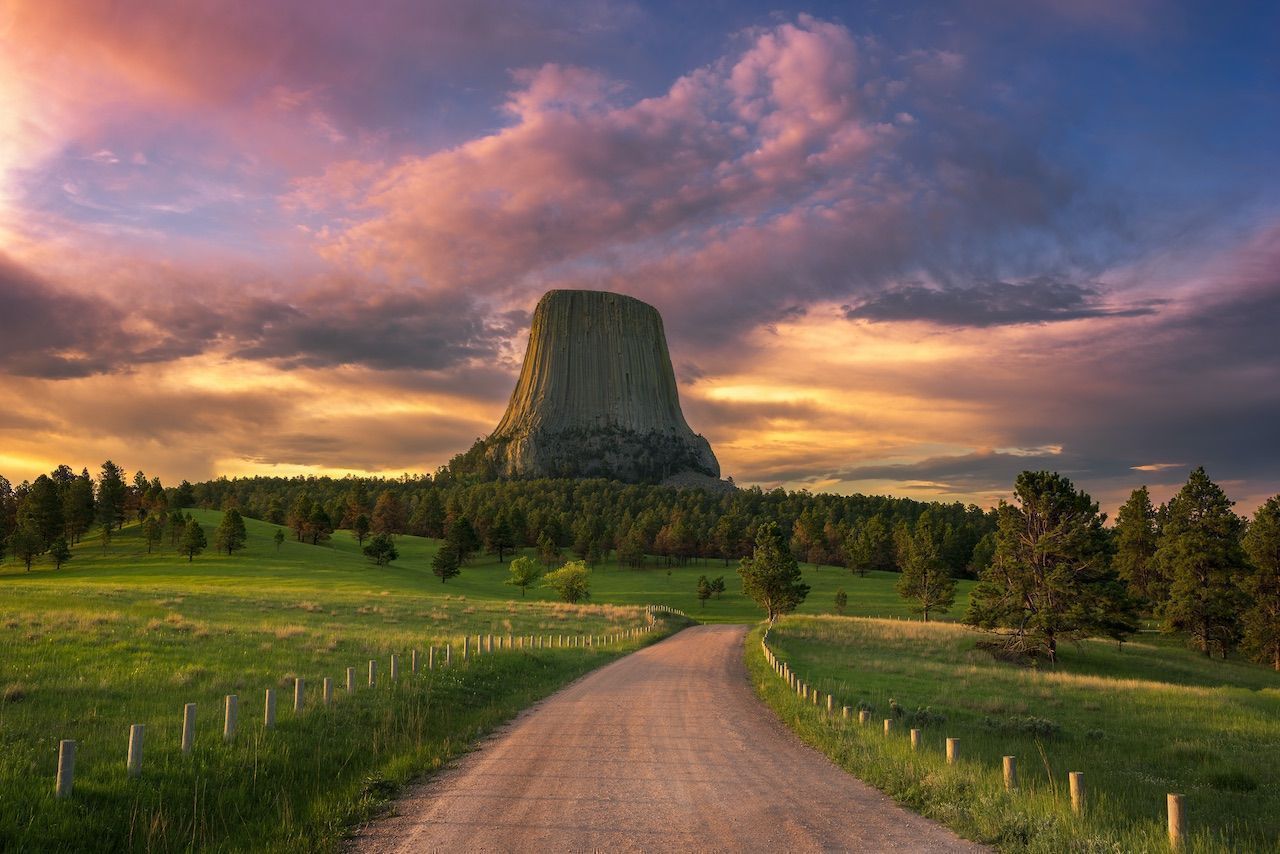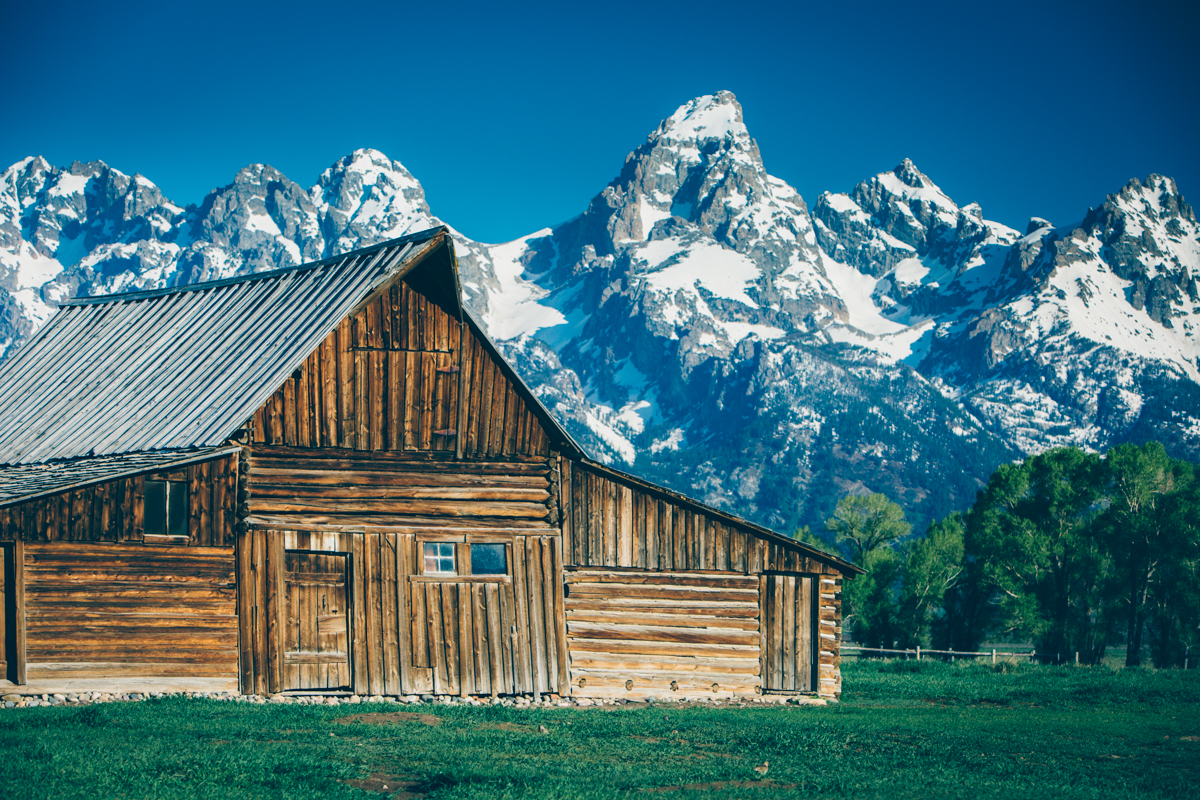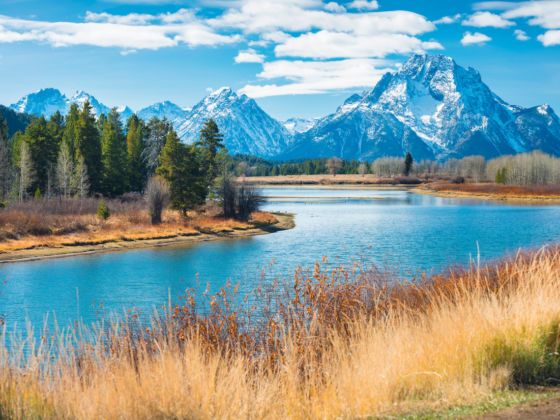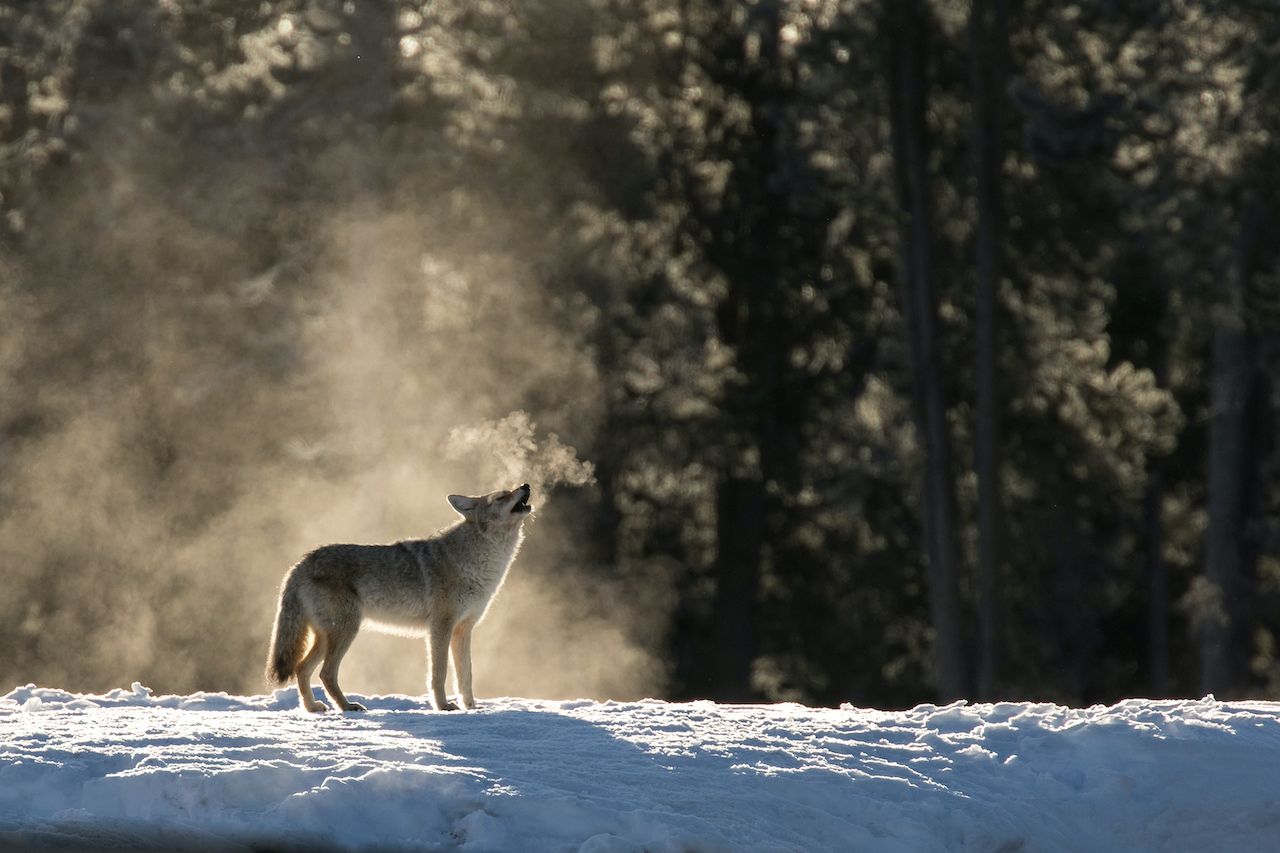WYOMING IS A LAND of big landscapes, big wilderness and wildlife, and big adventures. Whatever you’re into, there’s probably a corner of Wyoming — and a knowledgeable operator — that’s geared specifically to what you’re looking for. Below are eight ideas to get you started.
1. Climbing Devils Tower

Photo: Shutterstock/Anthony Heflin
In the northeast corner of Wyoming, a 500ft vertical fountain of rock explodes out of the plains. You may recognize the formation from the film Close Encounters of the Third Kind — in real life it’s not an alien landing pad but a serious destination for rock climbers.
To stand on top of Devils Tower, you must ascend via one of the multi-pitch technical rock climbing routes. The experience isn’t limited to professionals, though. Some routes are beginner-friendly, and if you lack the equipment or expertise, get in touch with Frank Sanders, owner / operator of Devils Tower Lodge. He’s the local legend who’s been climbing at the tower since hitchhiking to Wyoming from the East Coast in the early ‘70s. Whether it’s your first time tying in or you just want to simplify the logistics, he’s the man — even experienced climbers should check in with Frank to get a dose of oral climbing history, sage wisdom, and route recommendations. He also offers donation-based camping on his property that’s a stone’s throw from the tower.
2. Fly fishing the North Platte
The North Platte is fed by tailwater runoff from three reservoirs, meaning it’s fertile ground for big trout. The locals speculate that there’s upwards of 5,000 fish per mile, and hooking a 10lb lunker isn’t uncommon. You don’t need to be hauling your own gear — several outfitters can set you up with a fully equipped float trip, with riverside accommodations typically thrown in, too. The Miracle Mile (actually 5+ miles) and Grey Reef are sweet sections to float or wade in. To up the adventure, try rappelling into a secluded spot in Fremont Canyon (just be sure you have the climbing skills to get out!).
Fishing license required; contact WY Game & Fish for more info.
3. Hiking and climbing Grand Teton

Photo: Scott Sporleder
The Tetons are just as Wyoming-iconic as Yellowstone’s Old Faithful, and a trip to the northwest corner of the state isn’t complete without a hike in Jackson Hole’s backyard. Summiting the highest and most prominent peak in the range requires some experience and serious drive (hit up Exum Mountain Guides if you lack the former); the ambitious trek begins at the Lupine Meadows trailhead and climbs over 7,000 feet to reach the 13,776ft summit.
While the classic Owen-Spalding route has been done in under three hours, most break up the feat over two days. In a couple of places there’s massive exposure, coupled with some technical maneuvers, so roping up is the norm (especially for the descent). Start early (think 3am) to avoid afternoon thunderstorms, and assess your ability and fitness levels conservatively — this is a serious undertaking. The nearby American Alpine Club Climbers’ Ranch is a great place to get information, meet other climbers, and hook up with some budget accommodation.
4. Mountain biking in Curt Gowdy State Park
Situated on the high plains between Laramie and Cheyenne, Curt Gowdy State Park is an excellent place to hop into the saddle. The park’s 32 miles of trails cater to all ability levels and offer incredibly varied terrain, from technical granite slabs to sinuous singletrack threaded through aspen groves. They’ve also earned an ‘Epic’ designation from the International Mountain Bicycling Association. The park tops out at 8,000 feet, so big kudos for the extra cardiovascular effort.
5. Exploring the Continental Divide in Medicine Bow National Forest
In southern Wyoming, not too far west of Cheyenne, rises the Snowy Range, which is part of Medicine Bow National Forest. There are a ton of pristine camping options to choose from, and Medicine Bow Peak (12,014 feet) is a moderately challenging, non-technical summit hike. If you aren’t in the mood to gain more elevation, just sit back and enjoy the wildflower blooms, or drop a line in the cool mountain lakes; the area just north of Highway 130 — roadway closed in winter — is dotted with them.
6. Soaking in Saratoga’s Hobo Hot Pool
If you’re driving on I-80 between Laramie and Rawlins, make the quick detour down Highway 130 to the Hobo Hot Pool in Saratoga, a killer way to keep the blood circulating. Choose from a pool and “lobster pot” that tops 115° degrees, or just hang out by the Platte River.
Saratoga — home to 1,600 — also has some sweet watering holes, like the Rustic Bar and the 122-year-old Hotel Wolf & Restaurant, which anchors the historic downtown in a Wild West spirit. On most summer weekends there’s live music by the river; if you’re able to catch a folk performance by Wyoming’s own banjo pickin’ troubadour, Jalan Crossland, consider yourself lucky. On Father’s Day, the Woodchoppers Jamboree and Rodeo, which takes place in nearby Encampment, is also well worth checking out.
7. Heading into Yellowstone’s backcountry
Ditch the roads and experience the world’s first national park with the power of your own two feet. With over 1,100 miles of trails, the options for getting into the wild are endless. The Lamar Valley (northeast) is excellent for spotting wildlife — elk, moose, wolves, moose, bison, bears — and the truly intrepid can spend a week on this 70-mile circuit.
Hiking through Cascade Corner (southwest) is a good option in late summer and early fall when the bugs have subsided and the rivers are easier to ford. The 32-mile trek starting at the Lonestar trailhead and ending at the Bechler ranger station is an incredible way to spend four days. There are plenty of side trips along the trail if you have more time.
Practice proper food storage and be bear aware to ensure you don’t have too intimate an encounter with the local grizzlies. Permits are required and reserving backcountry campsites is recommended. A plethora of hot springs make winter ski touring in the park a great option.
8. Checking out the vertical beaches and canyons at Alcova Reservoir
In central Wyoming, about 30 miles southwest of the city of Casper, there’s a summertime oasis called Alcova. A cruise or paddle up the scenic canyon on the southwest end (by the marina) is a must, as is climbing up the dune that creates Sandy Beach. For a messy, one-of-a-kind waterslide, take some buckets and slick down the bentonite hills in the cove adjacent to Black Beach Campground.
When you’re done getting wet, Independence Rock, the famous Oregon Trail landmark, is located a 30 minutes’ drive to the west. Don’t miss this beacon to the past, which is a great reminder of just where Wyoming sits in the chronicle of the American West.


